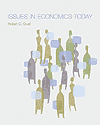 |
1 |  | 
Head Start serves nearly 1 million children who are |
|  | A) | representative of the general population. |
|  | B) | physically handicapped. |
|  | C) | generally poorer than the overall population. |
|  | D) | exclusively from the inner city. |
 |
 |
2 |  | 
The premise of Head Start was that children in high quality pre-school are eventually |
|  | A) | more likely to graduate from high school. |
|  | B) | less likely to end up in prison. |
|  | C) | less likely to become pregnant as teens. |
|  | D) | all of these |
 |
 |
3 |  | 
Present value analysis suggests that if the premise of Head Start ( higher graduation rates, lower pregnancy rates etc. ) is valid |
|  | A) | then the program is, by definition, worth the investment. |
|  | B) | then the program is still unlikely to be worth the investment. |
|  | C) | it still must return far more dollars in these better outcomes than was spent on the program originally because the payoffs occur much later than the costs. |
|  | D) | as long as the dollar benefits from the better outcomes in the future is equal to the dollar costs of the program now. |
 |
 |
4 |  | 
The argument for why the market fails to provide the correct level of pre-school spending for poor children centers on the notion of the ______ of the program. |
|  | A) | external costs |
|  | B) | private benefits |
|  | C) | private costs |
|  | D) | external benefits |
 |
 |
5 |  | 
The evidence from early studies conducted on the economic value of high quality early childhood education suggested that for every dollar spent ______ would be returned later in higher tax revenues and lower government costs from the increased success of those children. |
|  | A) | $1.50 |
|  | B) | $5.00 |
|  | C) | $50.00 |
|  | D) | $500.00 |
 |
 |
6 |  | 
The early evidence on pre-school suggested that a national Head Start program would |
|  | A) | be a total waste of money. |
|  | B) | yield a high rate-of-return and with a significantly positive present value. |
|  | C) | yield a low rate-of-return with a near-zero present value. |
|  | D) | pay for itself because parents would pay tuition. |
 |
 |
7 |  | 
The evidence on Head Start suggests that the benefits of the early pre-school on enrollees |
|  | A) | continues undiminished over their lifetime. |
|  | B) | continues throughout their lifetime but does diminish as time goes on. |
|  | C) | doesn't even last into kindergarten. |
|  | D) | diminishes through the early grades and is unseen past the 3rd grade. |
 |
 |
8 |  | 
Enrollment in the Head Start program |
|  | A) | is below 100,000. |
|  | B) | is between 800,000 and 1,000,000. |
|  | C) | is between 2,000,000 and 3,000,000. |
|  | D) | is greater than 5,000,000. |
 |
 |
9 |  | 
Inflation-adjusted spending on Head Start |
|  | A) | has remained flat. |
|  | B) | has rapidly increased since 1980. |
|  | C) | has increased since 1980 but by less than 5% over the entire period. |
|  | D) | has decreased since 1980. |
 |
 |
10 |  | 
The opportunity cost of spending on programs that are not effective includes |
|  | A) | the benefits that the money could have garnered in another program. |
|  | B) | the lost opportunity to imagine and test alternative programs that might be effective. |
|  | C) | neither a) nor b) because the mantra should be "do no harm" and as long as program do no harm they have no opportunity cost. |
|  | D) | both a) and b) |
 |




 2003 McGraw-Hill Higher Education
2003 McGraw-Hill Higher Education


 2003 McGraw-Hill Higher Education
2003 McGraw-Hill Higher Education